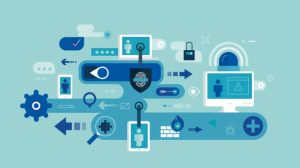It’s not good that computer users are so accustomed to the phrase “malware.” The name combines the words “malicious” and “software,” and was coined in the 1990s. As the name implies, it refers to malicious software designed to harm systems, frequently to steal private data. These dangers are pervasive and pose a grave risk to cybersecurity.
Common Viruses to Watch Out for
Over the years, hackers have created different malware types. One of the first steps we must take to stay secure is educating ourselves on the many types of viruses and how they operate.
Viruses
Like viruses that make people ill, computer viruses operate similarly. The virus contains a malicious file that will infect your computer when you open it, which can happen even with only one accidental click. Within your system, it will duplicate itself and attach itself to other programs. It will spread across many computers, like a typical virus, until it compromises entire networks.
Spyware
Spyware’s function is to spy on private information. Once on your system, it reports information like passwords, account names, bank credentials, and other facts to a different website by attaching itself to downloaded files. Frequently, if your computer runs slowly, spyware infection is the cause.
Adware
Do you ever notice the intrusive pop-up advertisements that appear as you use your computer? It’s difficult not to. They may inform you that they infected your computer, or that you have won something. Once you have downloaded something from an unsafe website, these typically appear. Adware pop-ups are not harmful by themselves, but as soon as you click on them, they can release a virus onto your computer or network.
Ransomware
In recent years, ransomware assaults have increased. These essentially freeze your network or data, doing no damage just yet, and they only unfreeze it once you have paid the ransom demanded by the hacker. However, if you choose not to pay the ransom, the hacker will often destroy all your data from the hostage-taking device.
Botware
Botware, a relatively new form of malware quickly gaining popularity, paralyzes your computer by bombarding it with denial-of-service attacks. One drawback of botware is that it causes your CPU to work nonstop, thus increasing your electricity consumption.
Malvertising: A New Kind of Malware
A new malware exists besides the prevalent varieties we have already discussed. Today, we refer to this as malvertising.
Malvertising rides on top of legitimate advertisements rather than attached to downloads and other things. By using auto-redirecting ads, the offenders distribute malware through legitimate advertisements. When you encounter these diverting advertisements, you will quickly find yourself on a phishing website.
Because they deliver more advertisements, large ad networks are used by cybercriminals who use malvertising. These networks find it very challenging to keep a very close check on every ad that they run. The malvertisers are relying on that. They can use this to implant more harmful malware into the victim’s network if they breach the ad script and add their encrypted code.
Final Reflections
Because of the constant creation of new malware, eliminating existing malware is practically impossible. The good news is that we can safeguard ourselves by exercising caution and vigilance in all our online activities.
Give us a call if you’d like further information on malware and how to shield your company from it. We can conduct employee training, deliver a comprehensive lecture on online risks, and strengthen your defenses against every type of malware that is now in use. Start your new Employee Training today and have everyone in your office check out our Free Ebook!







